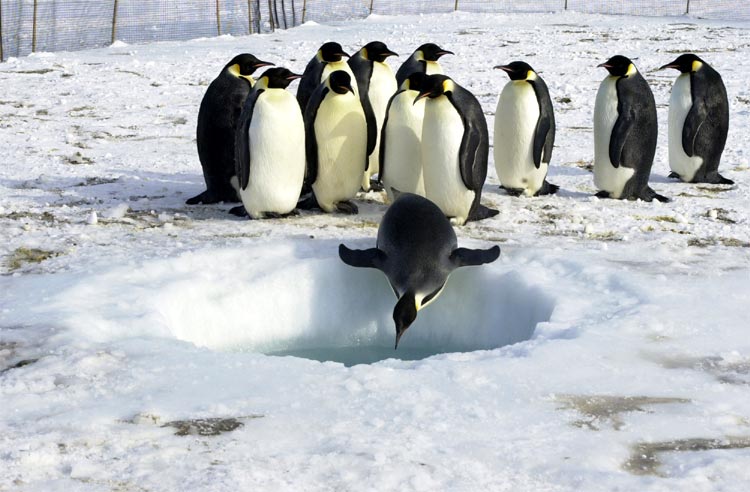 Antarctic DNA gives climate coping clues
Antarctic DNA gives climate coping cluesTuesday, 14 October 2008 Anna Salleh
ABC Science Online
Researchers say Adélie penguins have been surviving extreme climate change in Antarctica for hundreds and thousands of years (Source: Griffith University)
Related Stories
* Global warming may wipe out most birds
* Tropics the hot spot for speedy evolution
* A faster evolutionary clock?
DNA in the bones of Adélie penguins that survived the last ice age are helping to shed light on how other animals will cope with climate change, say researchers.
Evolutionary biologist Professor David Lambert of Griffith University in Brisbane and colleagues report their analysis of Adélie penguin DNA dating back to 37,000 years in the journal PLOS Genetics.
"Adélie penguins are a wonderful model to study the problem of climate change," says Lambert. "They have lived through temperature fluctuations much higher than those in equatorial regions."
Lambert says Adélie penguins have survived 10°C of warming since the last glacial maximum 18,000 years ago.
And he expects them to have been around 120,000 years earlier than that, during the peak of the ice age before last.
Adélie penguins are one of very few species that have survived in large numbers over such a long time, says Lambert.
Surviving climate change
Lambert says if species are able to move geographically there is evidence that they can combat climate change by staying within their preferred temperature range.
"The problem for Adélie penguins is they've got nowhere to go," says Lambert. "They're in the coldest place they can be."
He says the fact Adélie penguins have survived extreme changes in temperature may mean that some species are able to respond to climate change even when they can't move geographically.
Lambert and colleagues' research on the rate of evolution of Adélie penguins in Antarctica may help shed some light on why this is the case.
DNA analysis
The team analysed the number of mutations in the mitochondrial DNA of mothers and their chicks and compared this with DNA from ancestral penguins, taken from 37,000-year-old bones preserved in the extreme cold and dry conditions of Antarctica.
They found the rate of mutations between generations was the same as the rate over 37,000 years.
This is contrary to recent suggestions that evolution is faster over short time frames but slows down over long time frames, when the loss of genetic diversity due to speciation is taken into account.
Importantly, the rate of evolution of Adélie penguins found by Lambert and the team confirm earlier findings that the penguins evolve faster than previously thought, which may be one explanation for their ability to survive extreme variations in climate.
Other animals which have similarly high rates of evolution, are the tuatoara (a New Zealand reptile), bison, the brown bear and the cave lion, says Lambert.
Natural selection
Lambert says the DNA analysis has so far focused on genes not subject to natural selection.
He says these so-called "neutral" genes are important in developing an evenly ticking "molecular clock" for evolution.
Sequences under control of natural selection would change rapidly during some periods of time and hardly change at all at other periods of time.
Lambert says natural selection may also have played a role in Adélie penguin's survival in Antarctica and he hopes to also look at the mutation in genes that are subject to natural selection.
Raises questions
Evolutionary biologist Dr Jeremy Austin of the University of Adelaide says the work raises questions about the idea that evolution rates are time dependent.
But, he says it is possible that 37,000 years is not long enough for the slower evolutionary rate to show up.
"When we talk about evolutionary rates we're talking about things that are possibly a million years or more," Austin says.
He says sequencing even older DNA would be helpful as would comparing Adélie penguins with a sister species.
Lambert says he is confident the team will be able to obtain viable DNA from penguin remains preserved for hundreds of thousands of years many metres beneath the permafrost.
Story courtesy of ABC Science Online @
http://www.abc.net.au/science/articles/2008/10/14/2389526.htm?site=science&topic=latest

























































